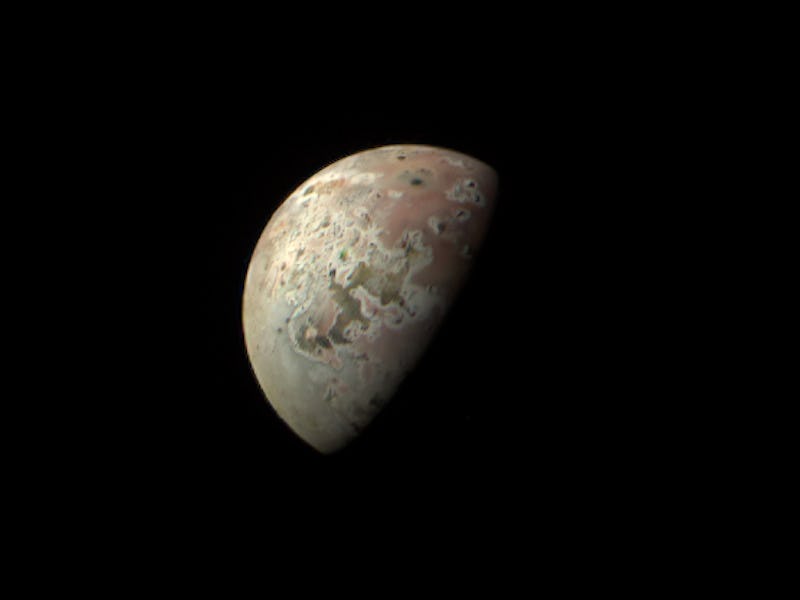Stunning NASA Juno Images Reveal Jupiter's Fiery Moon Io in All Its Glory
NASA took images of the cracked and volcanic surface of Jupiter's moon Io.

This week, when NASA sailed its Juno spacecraft near Jupiter’s moon Io, the space agency got its closest look yet at the most volcanic celestial body in the Solar System — and sent back some stunning photos.
Juno’s trip near Io was also perilous. Io is one of Jupiter’s four Galilean moons. In its close orbit around the titan, Io is at the mercy of a mighty gravitational influence, and is baked by the planet’s radiation. On Tuesday, the spacecraft made its closest approach to the moon.
More than 360 million miles away, a science team was nervously awaiting this encounter for months. Jupiter has the harshest radiation environment in the entire Solar System, and threading the needle to skim past Io came with risks. But Juno survived, thanks to its carefully crafted flight paths and an “armored tank” design. Since Juno’s arrival at Jupiter in 2016, it’s delivered a cache of data about Jupiter and its moons.
NASA’s Juno spacecraft caught this view of Io and Jupiter earlier this week.
Now NASA has released alluring images of Io. They showcase this roughhoused world, which is volcanic thanks to competing gravitational pulls from Jupiter and Io’s fellow Galilean moons. In new images published this week, Io’s cracked and textured surface reveals the unrelenting stretch and squeeze from its neighbors.
“Io is the most volcanic celestial body that we know of in our Solar System,” Juno’s principal investigator Scott Bolton says in a NASA statement published Monday. “By observing it over time on multiple passes, we can watch how the volcanoes vary — how often they erupt, how bright and hot they are, whether they are linked to a group or solo, and if the shape of the lava flow changes.”
Eight views of Io. NASA says that the JunoCAM onboard NASA’s Juno spacecraft acquired these eight views over a period of an hour and fifteen minutes, as Juno approached and moved away from Io.
Juno is currently flying on an extended mission through September 2025. It will continue to target Io throughout this year. “Our upcoming flybys in July and October will bring us even closer,” Bolton added. These will lead up to Juno’s “twin flyby encounters” with Io, in December 2023 and February 2024, when NASA expects to gain “amazing” data as Juno flies within 1,500 kilometers of Io’s surface.
Io is fascinating on its own, but there’s more to the story. The volcanoes spew sulfur, which lands on the cold moon’s surface and colors it red and yellow. But Io’s volcanism could be influencing its fellow Galilean moons, too.
The sulfur Io sprays into space might reach the surface of Europa. Although Jupiter is currently 460 million miles from the Sun (about five times the distance between Earth and the Sun), Europa may have the right conditions for life. Beneath Europa’s thick ice shell, there might be a deep ocean with hydrothermal vents. If Io’s sulfur reaches Europa, and if Europa’s ice interacts with the ocean and delivers this nutritional soot to Europa’s aquatic netherworld, life perhaps could have emerged in that corner of the Solar System.
Next year, another spacecraft called Europa Clipper will launch toward the Jupiter system. The spacecraft will perform flybys of Europa next decade to answer questions about Europa’s habitability, and closer to home, it could shed light on how life developed on ancient Earth.
If Europa Clipper succeeds, it will owe a debt to Juno and its groundbreaking design achievements.